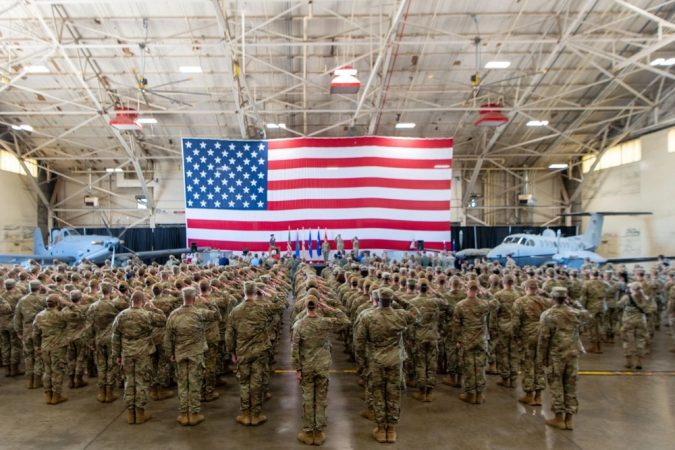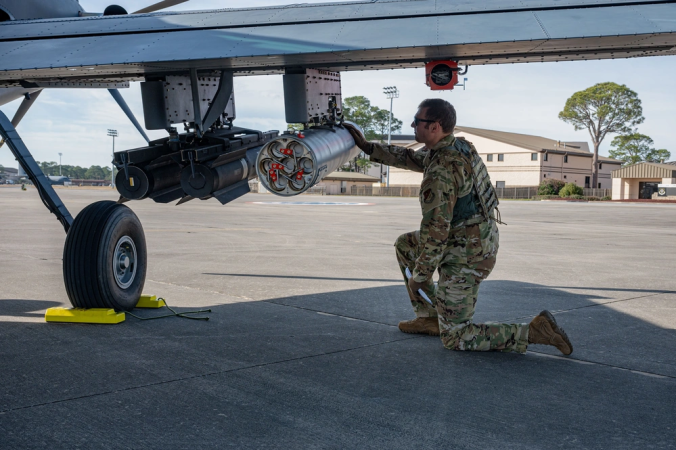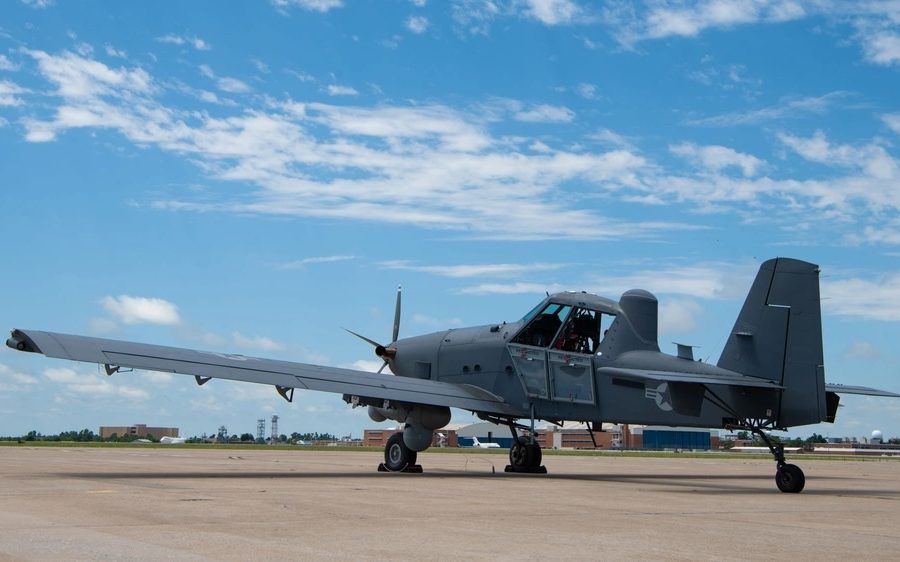The first batch of instructor pilots on one of the Air Force’s newest airframes are piling on the flight hours as they prepare to welcome their own students next fiscal year.
The first mission-ready OA-1K Skyraider II, a surveillance and attack aircraft, arrived at Will Rogers Air National Guard Base, Okla., in late April. It’s being flown by test crews and the initial cadre of instructor pilots, who will then train the first pilots for operational units starting in fiscal year 2026, an Air Force Special Operations Command spokesperson told Air & Space Forces Magazine.
“Multiple initial cadre members have passed 100 hours of flight time on the OA-1K,” the spokesperson said.
The 137th Special Operations Wing welcomed the Skyraider II at a ceremony June 7. A two-seat modified crop duster, the OA-1K will provide airborne eyes and ears as well as precision fires to support isolated special operations troops in the field, just as its namesake, the A-1 Skyraider, did in the Korean and Vietnam Wars.

More than 25 OA-1Ks will eventually settle at Will Rogers ANGB to support training and armed overwatch operations. The total fleet of 75 turboprop planes will be spread across four AFSOC bases. It’s not clear yet how many new OA-1K pilots are expected to train in Oklahoma every year.
“As the test efforts mature, we will be able to determine final syllabus requirements and how many students will be expected to train each year to satisfy operational requirements,” the spokesperson said.
Maj. Jehon Bendokas, chief of the armed overwatch requirements branch at AFSOC, expects the Skyraider II will be flying combat missions within the next two to three years. That’s nearly two decades after the Air Force launched its search for a simpler plane that could support the counterinsurgency fights in Iraq and Afghanistan and free up advanced assets for more complex missions.
The OA-1K is designed to provide the capabilities of multiple aircraft on a platform that’s less expensive and easier to maintain than purpose-built aircraft, and which can be easily modified to support new missions. During the Global War on Terror, air support for special operations often consisted of a “stack” of specialized attack, surveillance, or bombing aircraft, Bendokas explained.
“Collectively that stack adds up to a very expensive capability per flying hour,” he said on a June 4 episode of SOFcast, the official podcast of U.S. Special Operations Command. “The intent is to . . . collapse the stack, essentially take smatterings of those capabilities, make them modular, and make a platform that’s cost-effective, multirole, essentially, to be able to do close air support, precision strike, and armed [intelligence, surveillance, and reconnaissance].”
For example, a Skyraider II might fly one sortie with an ISR-focused loadout to give a special operations team information on a village where they are about to meet with local leaders, Bendokas said. The aircraft could land and swap the payload for weapons if the team gets into trouble. The plug-and-play design should give the Skyraider II longevity as new capabilities are developed in the future, he added.
The program was further influenced by a 2017 ambush that killed four U.S. Green Berets near the village of Tongo Tongo, Niger, according to Bendokas.
“The sequence of those events highlighted a gap in ISR and close air support coverage for geographically isolated SOF teams,” he said.

Skyraider II steps into that gap, which was previously filled by aircraft such as the A-1 Skyraider and A-37 Dragonfly. Those platforms “were absolute workhorses” for surveying the battlefield, providing forward air traffic control, and designating targets in Vietnam and Korea, he said. Many of the pilots and weapons systems officers who will soon fly the OA-1K previously flew the MC-12 and U-28 propeller planes, which played similar roles over Afghanistan and Iraq.
These crewed platforms often provide a sense of assurance for ground troops that uncrewed drones can’t, said Bendokas, a combat systems officer on the U-28.
“There are several cases that I’ve seen firsthand of the appreciation for having a human above the ground force,” he said. “At least you know that voice is above you . . . they’re there and they’re responsive and they’re not going to lose connectivity.”
Since they will likely operate without much support, Skyraider II crews may train to be more hands-on than those of other, more complicated aircraft, the major explained.
“Can we imagine a pilot that’s doing a level of maintenance similar to what a farmer’s able to do on his [agricultural] aircraft out in Oklahoma?” he said. “Imagine the weapons systems officer, the backseater, loading munitions with support of the pilot.”
That kind of self-reliance and small footprint could help the Skyraider II perform in agile combat employment, the Air Force concept where small groups of Airmen flit between dispersed airfields to avoid being targeted by enemy missiles.
“There is value proposition for this . . . across the spectrum of armed conflict,” Bendokas said.


